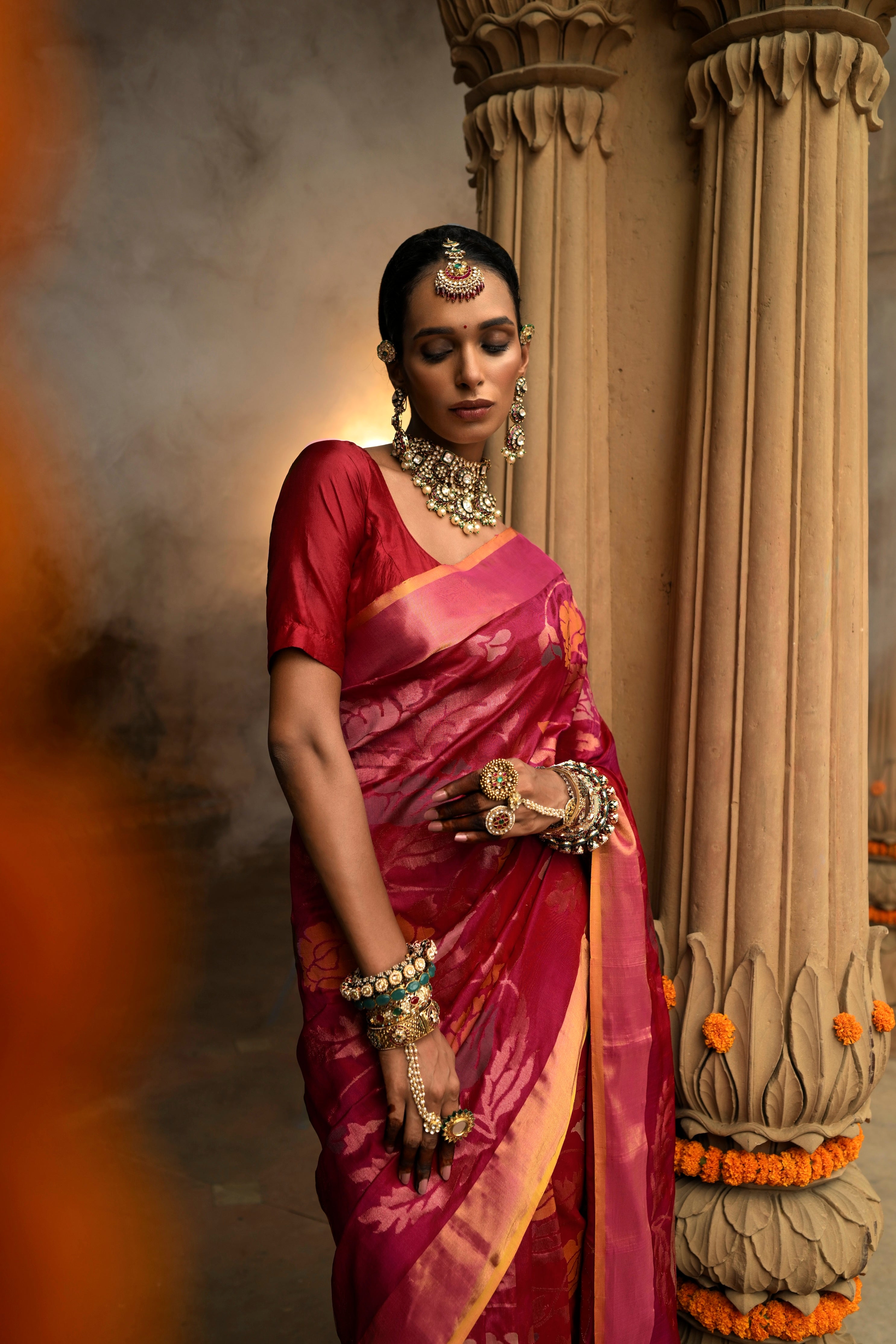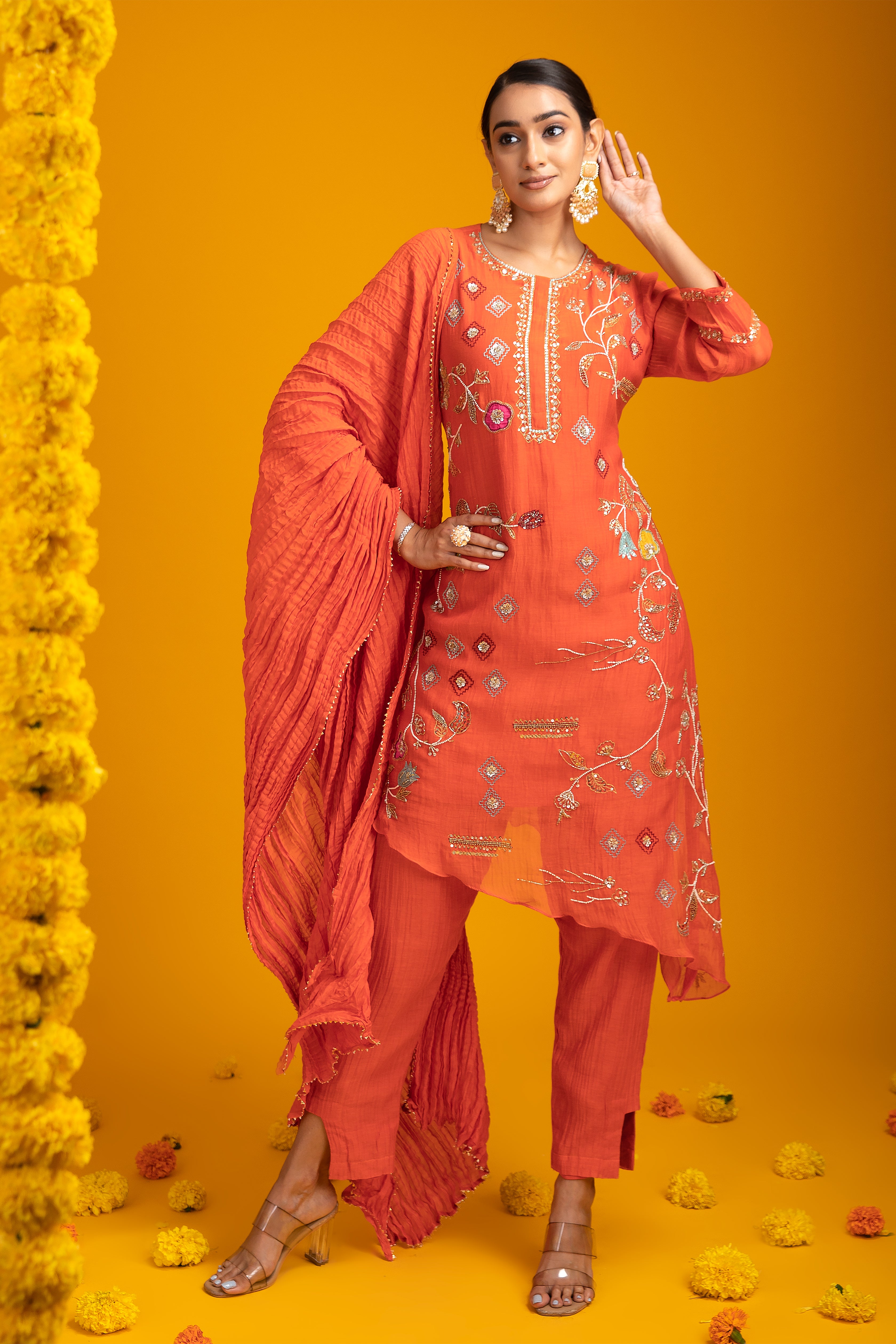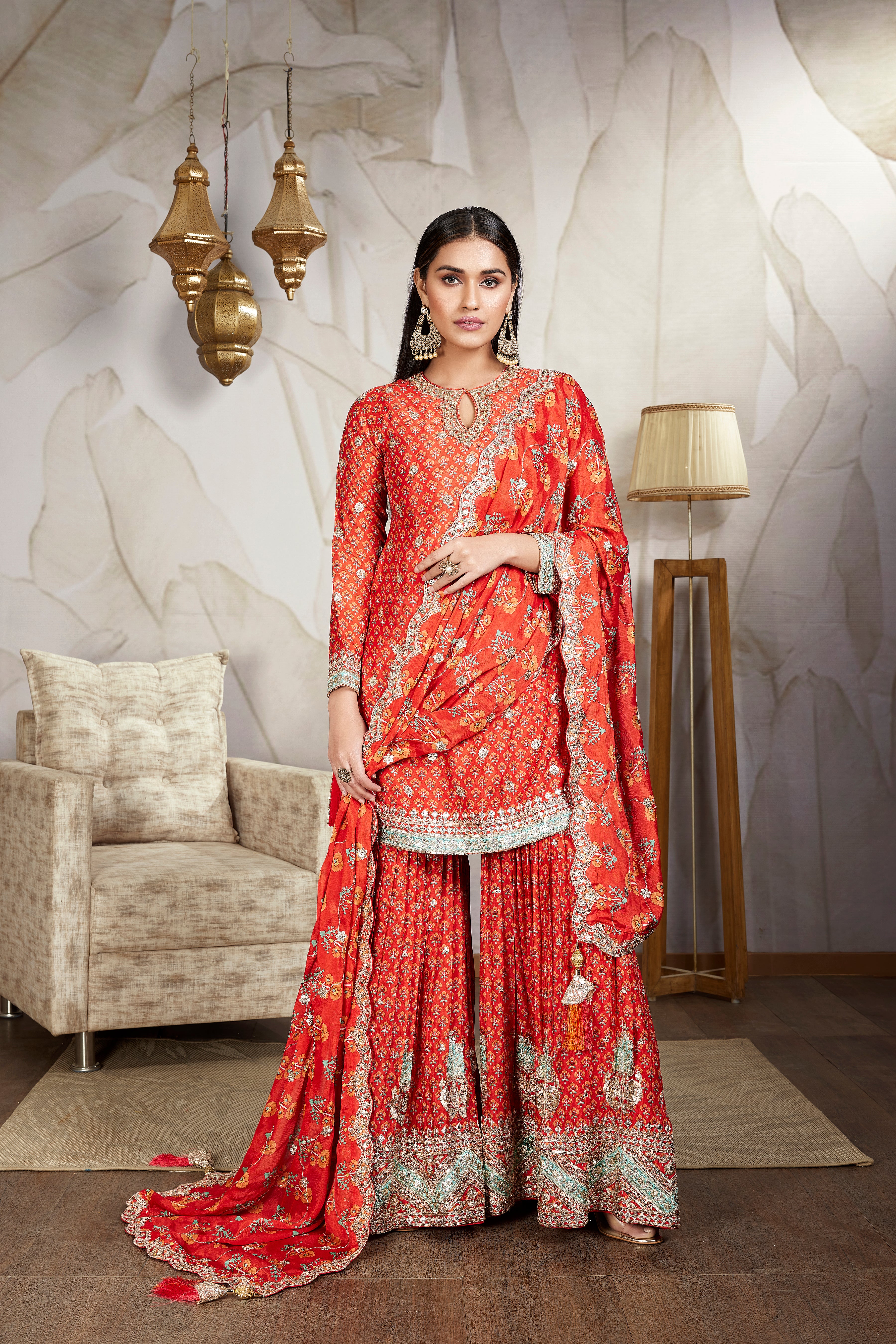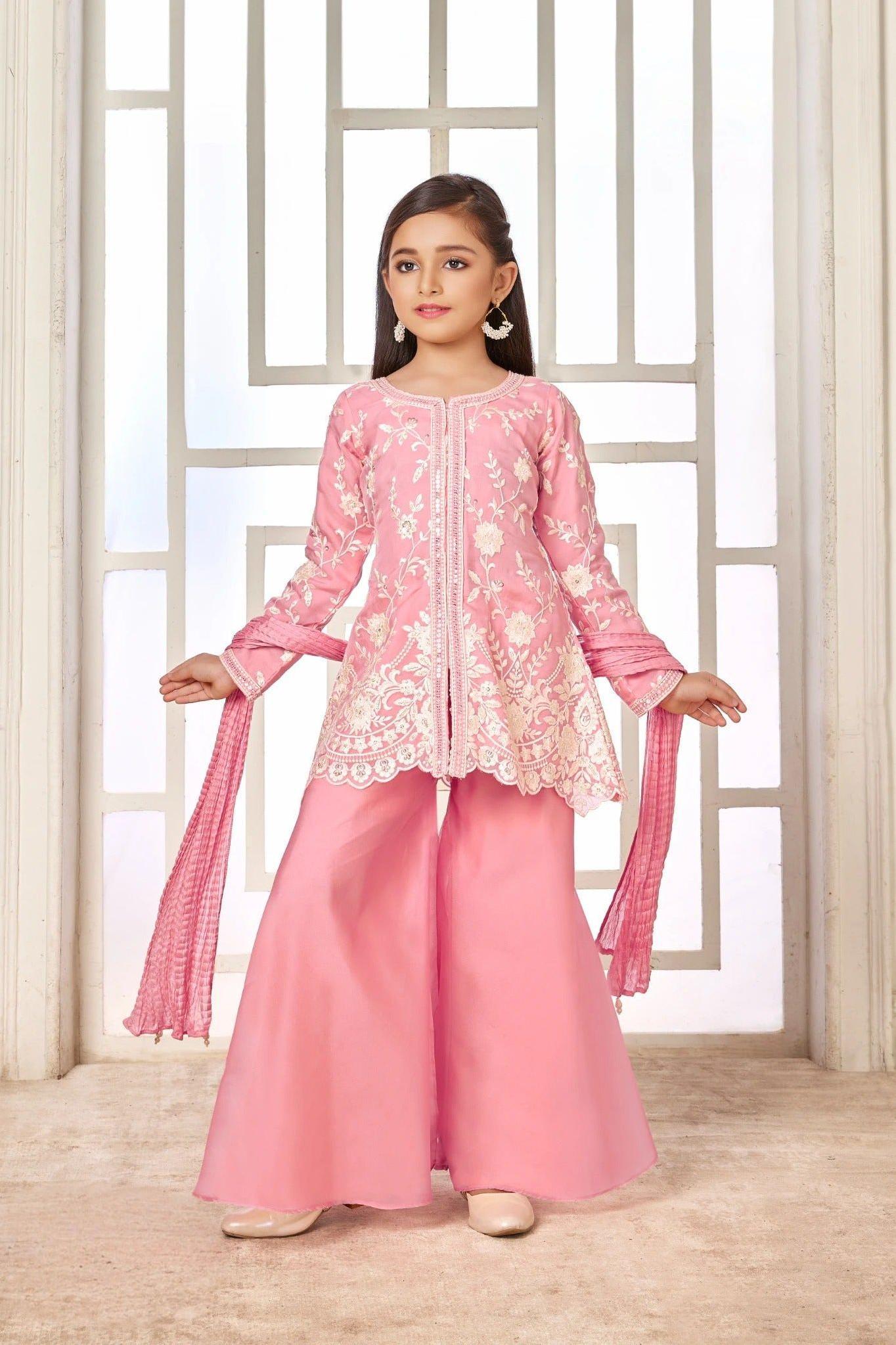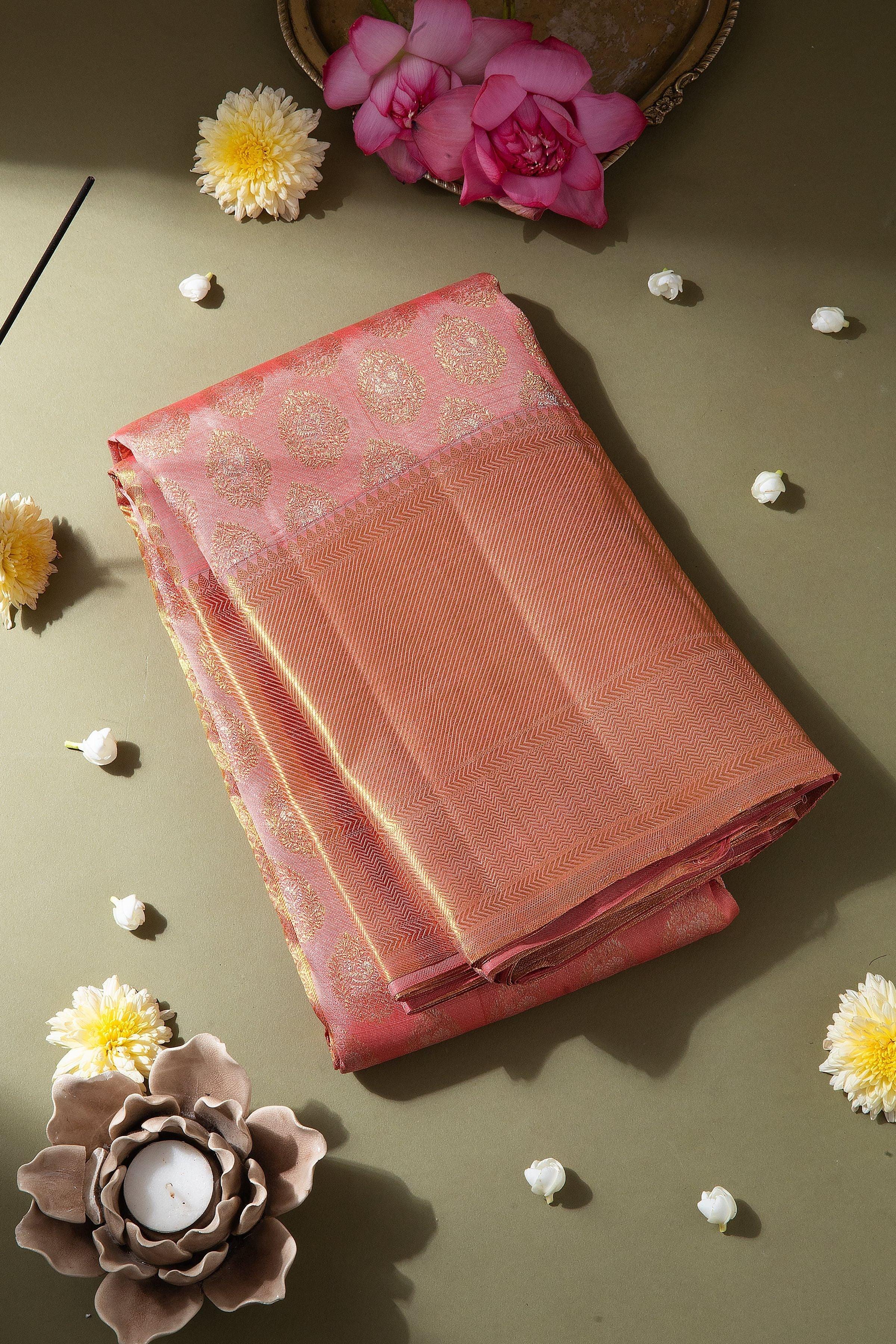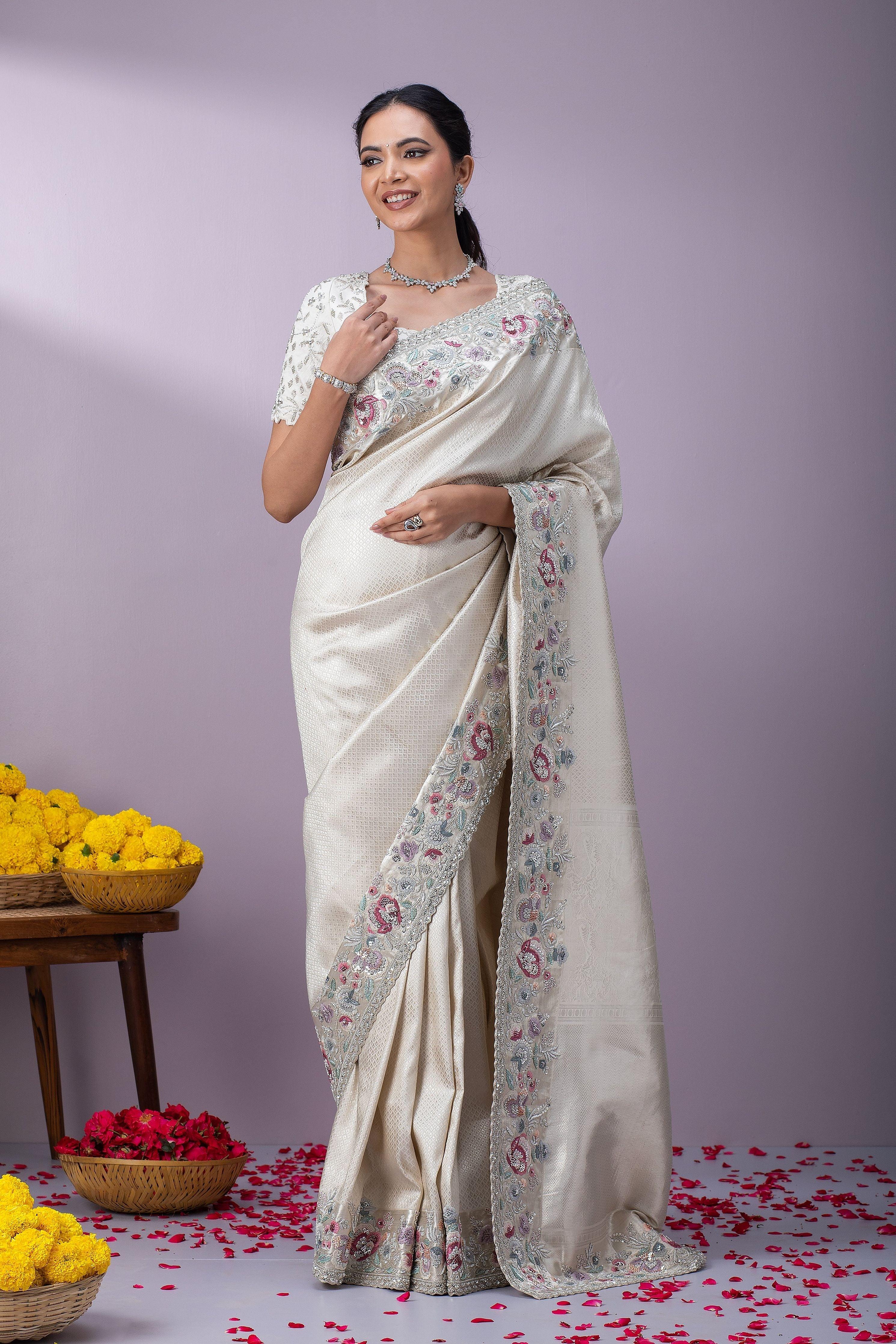As the owner of Mokshaa, a premium designer fashion boutique, I've had the privilege of working with some of the finest Kanchipuram silk sarees in the industry. Kanchipuram, a city in the southern Indian state of Tamil Nadu, is renowned for its exquisite silk weaving tradition that dates back centuries. These sarees are highly sought after for their unparalleled quality, intricate designs, and timeless elegance.
However, with the rise in demand for Kanchipuram silk, the market has also seen an influx of imitations and counterfeit products. It's crucial for fashion enthusiasts and saree connoisseurs to be able to distinguish an authentic Kanchipuram silk saree from its inferior counterparts. In this blog post, I'll share expert tips and insights to help you identify the real deal.
The Fabric: Softness, Sheen, and Drape
One of the most distinctive features of a genuine Kanchipuram silk saree is the fabric itself. Authentic Kanchipuram silk is known for its exceptional softness, lustrous sheen, and graceful drape. When you touch a real Kanchipuram saree, you'll immediately notice the smooth, almost velvety texture of the fabric.
The sheen of the silk should be uniform and consistent throughout the saree, with a subtle yet captivating glow. Genuine Kanchipuram silk has a natural luminescence that sets it apart from other silk varieties. Additionally, the saree should have a fluid, elegant drape that falls gracefully over the body, without any stiffness or heaviness.
The Weave: Intricate Patterns and Tight Interlocking
Kanchipuram silk sarees are renowned for their intricate, intricate weaving patterns that are a true testament to the skill and artistry of the weavers. Authentic Kanchipuram sarees feature complex designs, often with intricately woven borders, pallu (the end of the saree), and body patterns.
Take a close look at the weave of the saree. The patterns should be symmetrical, with a tight, interlocking weave that creates a smooth, even surface. Counterfeit sarees often have loose, sloppy weaving that can be easily identified upon closer inspection.
The Selvedge: Tightly Woven Edges
The selvedge, or the finished edges of the saree, is another crucial indicator of authenticity. Genuine Kanchipuram silk sarees have tightly woven, reinforced selvedges that are a hallmark of the Kanchipuram weaving tradition.
Run your fingers along the edges of the saree. The selvedge should feel sturdy and well-constructed, with no loose threads or uneven sections. Imitation sarees may have sloppy, poorly finished edges that can't match the precision of an authentic Kanchipuram saree.
The Pallu: Intricate Designs and Distinct Patterns
The pallu, or the decorative end of the saree, is a crucial element in identifying an authentic Kanchipuram silk saree. Kanchipuram sarees are known for their elaborate, intricate pallu designs, which are often the focal point of the garment.
Examine the pallu closely. Genuine Kanchipuram sarees will have a distinct, symmetrical pattern that is woven with exceptional attention to detail. The designs may feature motifs like temple towers, peacocks, or traditional South Indian patterns. Imitation sarees often have simpler, less intricate pallu designs that lack the depth and complexity of the real thing.
The Borders: Vibrant Colors and Precise Patterns
The borders of a Kanchipuram silk saree are another key element to consider when identifying authenticity. Kanchipuram sarees are renowned for their vibrant, jewel-toned borders that are woven with meticulous precision.
Look closely at the borders of the saree. The colors should be rich and saturated, with no fading or unevenness. The patterns should be sharp, well-defined, and consistent throughout the length of the saree. Imitation sarees may have blurry, imprecise border designs or use lower-quality dyes that result in a dull, muted appearance.
The Zari: Authentic Gold or Silver Threads
The zari, or the metallic threads used in Kanchipuram sarees, is a crucial indicator of authenticity. Genuine Kanchipuram sarees feature real gold or silver zari, which adds to the overall opulence and value of the garment.
Gently rub the zari threads between your fingers. Authentic zari should feel sturdy, with a slight roughness to the touch. Imitation zari, often made from cheaper metals or alloys, may feel smoother and less substantial. You can also try to bend the zari threads - genuine gold or silver zari will be more resistant to bending and breaking compared to imitation versions.
The Label and Certification
Finally, a reliable indicator of an authentic Kanchipuram silk saree is the presence of a proper label and certification. Reputable Kanchipuram silk saree brands will have a clear label that identifies the saree as a genuine product from Kanchipuram.
Look for a label that includes details like the weaver's name, the saree's unique identification number, and any relevant certifications or seals of authenticity. Avoid sarees without proper labeling or those with vague or questionable claims of authenticity.
Identifying an authentic Kanchipuram silk saree requires a keen eye and attention to detail. By familiarizing yourself with the key characteristics of genuine Kanchipuram silk, you can confidently navigate the market and ensure that you're investing in a truly exceptional and timeless piece of Indian textile heritage. Happy saree shopping!

